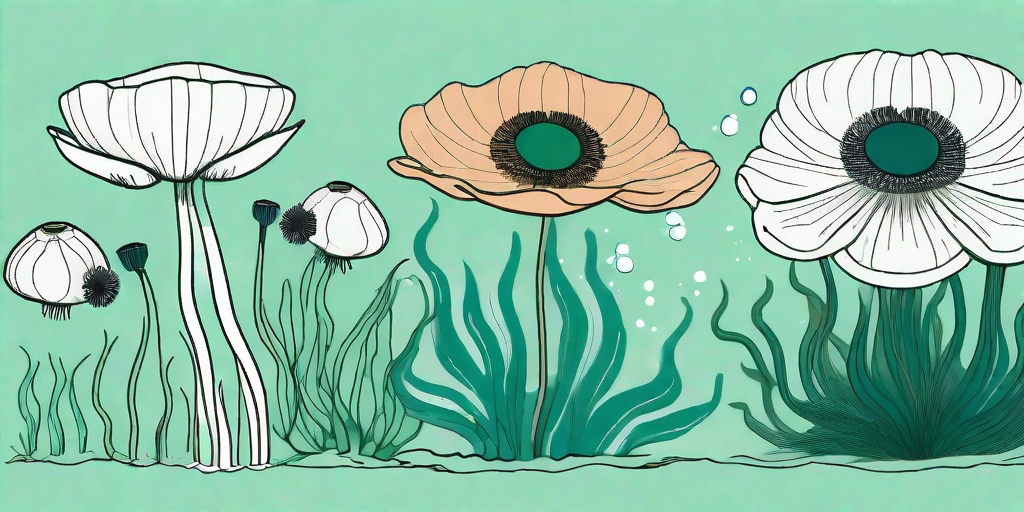
Anemones, those colorful, wavy, and somewhat mysterious creatures of the sea, have always been a source of fascination for marine biologists, underwater photographers, and anyone with a keen interest in the ocean's biodiversity. But did you know that there's more to these underwater beauties than meets the eye? Oh yes, dear reader, prepare to dive deep into the hidden world of anemones, as we explore their lower classifications and uncover some truly fascinating facts.
Understanding Anemones: The Basics
Before we plunge into the depths of anemone classification, let's first get our feet wet with some basic information. Anemones, part of the phylum Cnidaria, are close relatives of corals and jellyfish. They are known for their vibrant colors and their ability to sting. But don't worry, most anemone stings are harmless to humans, unless you're particularly sensitive or unlucky.
There are over 1,000 species of anemones found in all the world's oceans, from the warmest tropical waters to the coldest polar seas. They range in size from less than half an inch to nearly 6 feet in diameter. Now, that's a lot of anemone!
Life of an Anemone
Anemones lead a pretty chill life. They attach themselves to rocks, coral, or the ocean floor, and spend their days waving their tentacles in the water to catch passing food. Some anemones have a symbiotic relationship with certain fish and algae, offering them protection in return for food or cleaning services. Talk about a win-win situation!
And when it comes to reproduction, anemones have options. They can reproduce sexually, with males and females releasing sperm and eggs into the water, or asexually, by splitting in half or budding off a piece of themselves. Now, that's what we call self-sufficiency!
Lower Classifications of Anemones: A Deep Dive
Now that we've covered the basics, let's dive into the lower classifications of anemones. Anemones are divided into several families, each with its own unique characteristics and species.
Remember, these classifications are based on a variety of factors, including physical characteristics, habitat, and genetic makeup. So, let's put on our scuba gear and dive in, shall we?
Actiniidae: The Classic Anemones
The Actiniidae family is what most people picture when they think of anemones. These anemones are typically colorful, with a large, round body and numerous tentacles. They are found in a variety of marine environments, from tidal pools to deep sea floors.
One of the most famous members of this family is the clown anemone, which has a symbiotic relationship with clownfish. Yes, the same adorable duo you saw in "Finding Nemo"!
Stichodactylidae: The Carpet Anemones
Next up, we have the Stichodactylidae family, also known as carpet anemones. These anemones are named for their flat, spread-out appearance, which resembles a carpet. They are often brightly colored and can be quite large, making them a favorite among underwater photographers.
Carpet anemones also have a symbiotic relationship with certain fish, who use them as a safe haven from predators. But beware, these anemones have a powerful sting and can cause serious harm to unsuspecting divers or fish.
Frequently Asked Questions
Are all anemones dangerous?
No, not all anemones are dangerous. While they all have stinging cells, most are harmless to humans. However, some species, like the carpet anemone, have a powerful sting and should be handled with caution.
How do anemones eat?
Anemones catch their food with their tentacles, which are covered in stinging cells. When a small fish or shrimp swims by, the anemone stings it, paralyzes it, and then moves it to its mouth in the center of its body.
Can anemones move?
Yes, anemones can move, but they usually stay in one place. They can slowly slide along the ocean floor, or detach and float to a new location if conditions are unfavorable.
Conclusion
Well, there you have it, a deep dive into the hidden world of anemones and their lower classifications. From the classic Actiniidae to the carpet-like Stichodactylidae, these fascinating creatures are as diverse as they are beautiful.
So next time you're snorkeling or diving, take a moment to appreciate the anemones. And remember, they're more than just pretty faces, they're a vital part of our ocean's ecosystem. Now, go forth and share your newfound anemone knowledge with the world!















